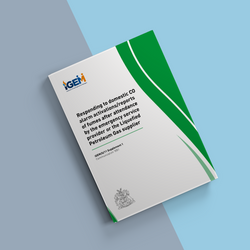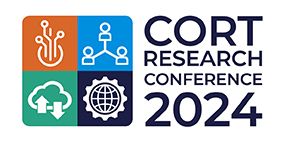IGEM/G/11 Supplement 1 - Responding to domestic CO alarm activations/reports of fumes after attendance by the emergency service provider or the Liquefied Petroleum Gas supplier

This Procedure has been drafted by a Panel appointed by the Institution of Gas Engineers and Managers (IGEM) Technical Coordinating Committee, subsequently approved by that Committee; the Gas Utilisation Committee, the Gas Measurement Committee and the Gas Transmission and Distribution Committee and published by the authority of the Council of IGEM.
In creating this Procedure the Panel has applied the Gas Safety (Installation and Use) Regulations (GS(I&U)R) and their Approved Code of Practice (ACoP) guidance document L56 when dealing with reports of carbon monoxide (CO) alarm activation and/or reports of fumes.
This Procedure is intended for use by Gas Safe registered businesses/engineers when dealing with reports of CO alarm activation and/or reports of fumes in domestic premises supplied with Natural Gas (NG) or Liquefied Petroleum Gas (LPG), and is intended to follow a site specific risk assessment.
This Procedure provides guidance to competent engineers for the scope of work they can undertake when attending to reports of CO alarms/fumes in domestic properties, without the need to hold a specialist qualification (i.e. CMDDA1).
The information provided in this Procedure is relevant to all gas equipment (installations and appliances) installed in domestic premises.
It aims to provide guidance to competent engineers when dealing with reports of CO alarm activation and/or reports of fumes after attendance by the Emergency Service Provider (ESP) or the LPG supplier, who have made safe and deemed the property’s atmosphere safe.
Introduction
1.1 This Procedure has been drafted by a Panel appointed by the Institution of Gas Engineers and Managers (IGEM) Technical Coordinating Committee, subsequently approved by that Committee; the Gas Utilisation Committee, the Gas Measurement Committee and the Gas Transmission and Distribution Committee and published by the authority of the Council of IGEM.
1.2 In creating this Procedure the Panel has applied the Gas Safety (Installation and Use) Regulations (GS(I&U)R) and their Approved Code of Practice (ACoP) guidance document L56 when dealing with reports of carbon monoxide (CO) alarm activation and/or reports of fumes.
1.3 This Procedure is intended for use by Gas Safe registered businesses/engineers when dealing with reports of CO alarm activation and/or reports of fumes in domestic premises supplied with Natural Gas (NG) or Liquefied Petroleum Gas (LPG), and is intended to follow a site specific risk assessment.
1.4 This Procedure provides guidance to competent engineers for the scope of work they can undertake when attending to reports of CO alarms/fumes in domestic properties, without the need to hold a specialist qualification (i.e. CMDDA1).
1.5 This Procedure provides guidance when competent engineers need to escalate the situation to an engineer who holds specialist qualification (i.e. CMDDA1).
1.6 For premises other than domestic, including premises that are outside the scope of GS(I&U)R, the safety principles outlined in this Procedure can be used, following a suitable risk assessment and by persons with appropriate competency.
1.7 This Procedure makes use of the terms “must”, “shall” and “should” when prescribing particular requirements. Notwithstanding clause 1.10:
- the term “must” identifies a requirement by law in Great Britain (GB) at the time of publication
- the term “shall” prescribes a requirement which, it is intended will be complied with in full and without deviation
- the term “should” prescribes a requirement which, it is intended, will be complied with in full unless, after prior consideration, deviation is considered to be acceptable.
Such terms may have different meanings when used in Legislation, or Health and Safety Executive (HSE) ACoPs or Guidance, and reference needs to be made to such statutory Legislation or official Guidance for information on legal obligations.
1.8 The primary responsibility for compliance with legal duties relating to health and safety at work rests with the employer. The fact that certain employees, for example “competent engineers” are allowed to exercise their professional judgement does not allow employers to abrogate their primary responsibilities. Employers must:
- have done everything to ensure, as far as is reasonably practicable, that there are no better protective measures that can be taken other than relying on the exercise of professional judgement by "competent engineers"
- have systems and procedures in place to ensure that the exercise of professional judgement by “competent engineers” is subject to appropriate monitoring and review
- not require “competent engineers” to undertake tasks which would necessitate the exercise of professional judgement that is not within their competence. There should be written procedures defining the extent to which “competent engineers” can exercise their professional judgement. When “competent engineers” are asked to undertake tasks which deviate from this, they should refer the matter for higher review.
1.9 It is now widely accepted that the majority of accidents in industry generally are in some measure, attributable to human as well as technical factors. People who initiated actions that caused or contributed to accidents might have acted in a more appropriate manner to prevent them.
To assist in the control and proper management of these human factors, due regard should be taken of HSG48 and HSG65.
1.10 Notwithstanding Sub-Section 1.5, this Procedure does not attempt to make the use of any method or specification obligatory against the judgement of the competent engineer. Where new and better techniques are developed and proved, they should be adopted without waiting for modification of this Procedure. Amendments to this Procedure will be issued when necessary and their publication will be announced in the Journal of IGEM and other publications as appropriate.
1.11 This Procedure has been drawn up by the gas industry, in order to assist competent engineers in meeting their legal duties in accordance with the GS(I&U)R and associated Approved Codes of Practice and Guidance and correctly deal with reports of CO alarms activations and/or fumes.
HSE supports this Procedure, which will assist the industry in maintaining a consistent approach to dealing with reports of CO alarms activations and/or fumes.
This Procedure, is in effect a ”live” document and is intended to be revised periodically as new information/guidance is developed. To ensure that you keep up to date with the current requirements of this Procedure visit: http://igem.org.uk/.
1.12 Requests for interpretation of this Procedure in relation to matters within its scope, but not precisely covered by the current text, should be either:
- addressed to Technical Services, IGEM, IGEM House, High Street, Kegworth, Derbyshire, DE74 2DA; or
- emailed to [email protected].
These will be submitted to the relevant Committee or Panel for consideration and advice, but in the context that the final responsibility is that of the engineer concerned. If any advice is given by or on behalf of IGEM, this does not relieve the competent engineer of any of their obligations.
1.13 This Procedure was published in March 2022.
Scope
2.1 The information provided in this Procedure is relevant to all gas equipment (installations and appliances) installed in domestic premises (see clause 1.4).
2.2 It aims to provide guidance to competent engineers when dealing with reports of CO alarm activation and/or reports of fumes after attendance by the Emergency Service Provider (ESP) or the LPG supplier, who have made safe and deemed the property’s atmosphere safe.
2.3 When not on site, gas engineers may receive reports of CO alarm activations / reports of fumes. The situation is to be immediately reported to the ESP/LPG supplier who will attend and make the situation safe.
Note: A reference number can be obtained from the ESP/LPG Supplier.
2.4 The priority for gas engineers when dealing with reports of CO alarm activation and/or reports of fumes is to safeguard life and property. It is essential that gas engineers are able to identify gas equipment which presents a danger or potential danger and take prompt corrective actions to eliminate such danger.
2.5 Italicised text is informative and does not represent formal requirements.
2.6 Appendices are informative and do not represent formal requirements unless specifically referenced in the main sections via the prescriptive terms “must” “should” or “shall”.



